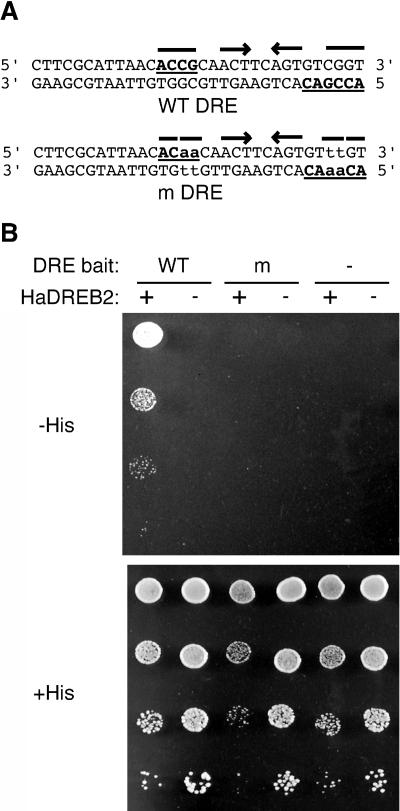Figure 4.
Yeast one-hybrid DNA-binding assays. A, The Bait 2 sequence between positions −289 and −258 in the Hahsp17.6G1 promoter, showing the positions of wild-type (WT) and mutant (m) DRE sequences. Nucleotides that partially, or totally, match the DRE core consensus 5′-(A/G)CCGnc-3′ (Sakuma et al., 2002) are underlined. Mutated nucleotides are in lowercase. Arrows indicate palindromes present in the wild-type and mutant DRE sequences. B, One-hybrid assays with yeast strains containing different combinations of prey and bait plasmids. The DRE Bait 2 plasmid was wild type (WT), mutant (m), or absent (−). The prey plasmid expressing HaDREB2 was present (+) or absent (−). Yeast cultures were diluted (1:10 successive dilution series), spotted onto selective medium containing 10 mm 3-AT and no Histidine (−His), or onto nonselective medium with Histidine (+His), then incubated for 3 d at 30°C.

